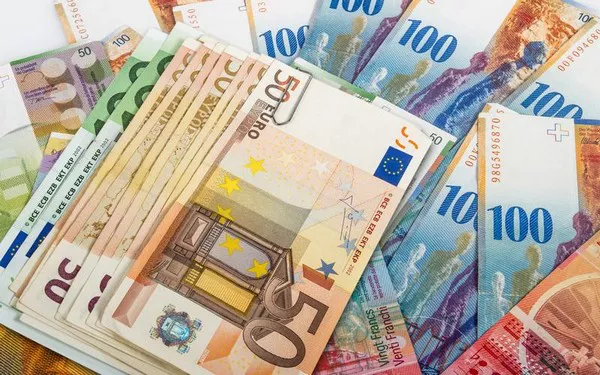The heartbeat of the European Union’s monetary policy is intricately connected to the European Central Bank (ECB), a pivotal institution responsible for maintaining price stability and economic growth. At the core of the ECB’s toolkit is the interest rate, a key determinant that influences borrowing costs, inflation, and overall economic health. In this article, we delve into the significance of the “European Central Bank Interest Rate Chart,” exploring its nuances, impact on financial markets, and its role in shaping the economic landscape of the Eurozone.
1. The Basics of the European Central Bank Interest Rate Chart
To comprehend the European Central Bank Interest Rate Chart, it’s essential to understand the basic concept of interest rates. The ECB sets the main refinancing rate, which acts as a benchmark for short-term interest rates in the Eurozone. The interest rate chart visually represents the historical changes in this crucial rate, offering a snapshot of the ECB’s monetary policy decisions over time.
2. Role of the European Central Bank
The ECB plays a pivotal role in steering the economic course of the Eurozone. Its primary objectives include maintaining price stability by targeting an inflation rate close to but below 2% over the medium term. The interest rate chart serves as a dynamic tool for policymakers to communicate their stance on monetary policy, whether it involves stimulating economic growth or curbing inflationary pressures.
See Also: ECB Report
3. The Components of the Interest Rate Chart
The interest rate chart comprises various components, illustrating the ECB’s key interest rates, such as the main refinancing rate, the deposit facility rate, and the marginal lending facility rate. Each of these rates serves distinct purposes, influencing the cost of borrowing for banks, the remuneration on deposits, and the rate at which banks can borrow from the ECB in emergencies.
4. Historical Trends and Patterns
Analyzing the historical trends within the interest rate chart provides valuable insights into the ECB’s responses to economic challenges and global events. From the aftermath of the financial crisis to the recent impact of the COVID-19 pandemic, the interest rate chart chronicles the ECB’s decisions in the face of evolving economic landscapes.
5. Inflation Targeting and Forward Guidance
One of the primary tools the ECB employs is inflation targeting. The interest rate chart reflects the ECB’s commitment to achieving its inflation target, influencing market expectations. Additionally, forward guidance, a communication strategy employed by central banks, is embedded in the interest rate chart, providing insights into the future trajectory of monetary policy.
6. Impact on Financial Markets
The European Central Bank Interest Rate Chart exerts a profound influence on financial markets. Changes in interest rates can trigger reactions in bond markets, currency exchange rates, and equity markets. Investors closely monitor the interest rate chart as it guides their investment decisions and helps anticipate market movements.
7. Transmission Mechanism in the Eurozone
Understanding how changes in the interest rate chart impact the broader economy involves examining the transmission mechanism. The interest rate influences lending and borrowing costs for households and businesses, impacting consumption, investment, and ultimately, economic activity. This intricate web of connections is crucial for policymakers to achieve their monetary policy objectives.
8. Unconventional Monetary Policy Measures
In times of economic crises, the ECB has resorted to unconventional monetary policy measures, such as quantitative easing and negative interest rates. These interventions are visible on the interest rate chart, providing a comprehensive view of the ECB’s efforts to address economic challenges beyond conventional policy tools.
9. Challenges and Criticisms
While the interest rate chart serves as a vital tool for transparency, it is not without criticisms. Some argue that the ECB’s focus on inflation targeting may not be sufficient in addressing the complexities of a dynamic and interconnected global economy. Others question the effectiveness of negative interest rates and their potential long-term consequences.
10. Future Outlook and Policy Implications
As we navigate through uncertain economic times, the interest rate chart becomes a compass for policymakers and market participants alike. The concluding section of the article explores the future outlook for the ECB’s monetary policy, considering the challenges and opportunities on the horizon and the potential implications for the European economy.
Conclusion
In essence, the European Central Bank Interest Rate Chart is more than a visual representation of historical interest rates; it is a dynamic reflection of the ECB’s commitment to maintaining stability and fostering economic growth within the Eurozone. As we continue to decipher the intricacies of monetary policy, the interest rate chart remains a valuable guide in understanding the evolving economic landscape of Europe.
Related Topics:
The Role and Dynamics of the ECB Board in Shaping Monetary Policy
The Role of the ECB Agency in European Economic Governance
A Comprehensive Look into the ECB Cricket Board




























